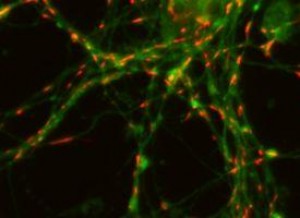Article by Rochester Team is the Most Viewed in Biotech Journal
Article by Rochester Team is the Most Viewed in Biotech Journal
A review article by scientists at the University of Rochester Medical Center for the journal BioTechniques was the journal’s most-viewed article in 2011.

Seth Perry, Ph.D.
The first author of the paper, which was first published in February of last year, is Seth Perry, Ph.D., research assistant professor of Biomedical Engineering. Other authors include faculty members Handy Gelbard, M.D., Ph.D.; Edward Brown, Ph.D.; former graduate student John Norman, Ph.D.; and technical associate Justin Barbieri.
The article is designed as a guide for scientists making measurements about the mitochondria, the structures that churn out the energy that cells need to survive. Measurements of their membranes play an important role in virtually every scientific field, including cancer, neuroscience, and cardiovascular research. It’s through measures like these – difficult to understand for people who are not scientists, but routine in laboratories worldwide – that new medical discoveries and treatments are created.

Mitochondria powering neurons are visible in red.
The team’s article focuses on the technical aspects of using fluorescent probes to measure a phenomenon known as the “mitochondrial membrane potential,” which controls the cell’s ability to produce energy and is an important measure of how well a cell is functioning.
The paper has its roots in the Gelbard laboratory, where Perry worked on the molecular signaling involved in HIV-associated neurocognitive disorder, which ultimately affects the majority of patients with HIV.
Perry was making measurements on mitochondria that seemed to run counter to the findings of other groups. This caused Perry and colleagues to repeat their experiments several times, using different methods, combing through the technical details extensively to make sure there had been no errors. There weren’t, and many other scientists have since published similar findings.
“We learned firsthand just how important it is to run additional controls and experiments to most accurately interpret the results from these dyes,” said Perry. “Your measurements are only as good as the tools you use to make them, or more specifically, how you use those tools.”
“While there’s been a great deal of work done on mitochondrial physiology, including many excellent reviews, I found that the real nitty-gritty how-to information was hard to come by. There was a lot more I needed to know regarding the usage considerations and characteristics and pitfalls of the many probes available. Many scientists like us were left to sort out the information ourselves, every time we did an experiment. Our article is designed as a how-to manual, aimed at first-time or non-expert users.”
In addition to his work on HIV and its effects on the nervous and immune systems, Perry is also working with Brown to explore the role of collagen in cancer metastases.
###
* The above story is adapted from materials provided by University of Rochester Medical Center
![]() ______________________________________________________________________
______________________________________________________________________




















